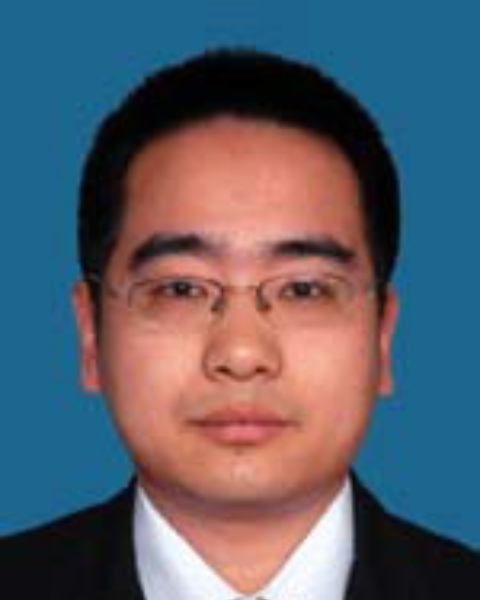PQA 04 - PQA 04 Palliative Care and Central Nervous System Poster Q&A
2629 - Optimizing Glioblastoma Radioimmunotherapy through Peptide-Based Immuno-PET/CT: Monitoring PD-L1 Upregulation Post-Radiation
Monday, September 30, 2024
10:45 AM - 12:00 PM ET
Location: Hall C
Screen: 26

Yong Wang
Jiyan, Shandong
Presenter(s)
Y. Wang1, Z. Liu2, and M. Hu1; 1Department of Radiation Oncology, Shandong Cancer Hospital and Institute, Shandong First Medical University and Shandong Academy of Medical Sciences, Jinan, Shandong, China, 2Shandong Cancer Hospital and Institute, Shandong First Medical University and Shandong Academy of Medical Sciences, Jinan, China
Purpose/Objective(s): The inefficacy of PD-1/PD-L1 monotherapy in glioblastoma (GBM) underscores the necessity for enhanced therapeutic strategies. This study hypothesizes that precise, real-time monitoring of PD-L1 expression using a novel peptide-based immuno-PET/CT tracer, [18F]AlF-PCP2, could optimize the timing and effectiveness of radioimmunotherapy. Materials/
Methods: [18F]AlF-PCP2 was synthesized and characterized for its binding affinity to PD-L1 using surface plasmon resonance (SPR). Its specificity and uptake were evaluated in vitro and in vivo in various GBM cell lines and orthotopic xenograft models. The tracers effectiveness in detecting PD-L1 expression changes post-radiotherapy (RT) treatment was assessed, along with its potential in identifying candidates for combination immunotherapy.
Results: In vitro and in vivo, [18F]AlF-PCP2 exhibited specific, high-affinity binding to PD-L1, with a binding constant (KD) of 0.24 nM. PET/CT imaging in the orthotopic U251MG model revealed a significant accumulation of [18F]AlF-PCP2 in tumors (9.51 ± 0.4%ID/cc), correlating with blood-brain barrier disruption as observed in Gd-DTPA-enhanced MRI. However, there was a 5.56 ± 0.03% decrease in uptake compared to subcutaneous tumors. Remarkably, after 15 Gy of RT, [18F]AlF-PCP2 uptake in tumors increased to 12.04 ± 1.43%ID/cc from 9.51 ± 0.73%ID/cc in controls, indicating enhanced PD-L1 expression consistent with immunohistochemistry findings. Fractionated RT (5 Gy × 3 fractions) further amplified PD-L1 upregulation (13.9 ± 1.54 %ID/cc) compared to a single dose (11.48 ± 1.05 %ID/cc). Identifying mice with significant PD-L1 upregulation after RT (IFN-? intervention) and then recruiting them to receive combination anti-PD-L1 therapy improved survival (P=0.0279).
Conclusion: [18F]AlF-PCP2 immuno-PET/CT enables precise, non-invasive monitoring of PD-L1 expression dynamics in glioblastoma post-radiation, offering a strategic advantage in optimizing radioimmunotherapy. This studys findings suggest that patients with early PD-L1 upregulation during radiotherapy could benefit significantly from subsequent anti-PD-L1 therapy, underlining the importance of tailored treatment strategies.
Purpose/Objective(s): The inefficacy of PD-1/PD-L1 monotherapy in glioblastoma (GBM) underscores the necessity for enhanced therapeutic strategies. This study hypothesizes that precise, real-time monitoring of PD-L1 expression using a novel peptide-based immuno-PET/CT tracer, [18F]AlF-PCP2, could optimize the timing and effectiveness of radioimmunotherapy. Materials/
Methods: [18F]AlF-PCP2 was synthesized and characterized for its binding affinity to PD-L1 using surface plasmon resonance (SPR). Its specificity and uptake were evaluated in vitro and in vivo in various GBM cell lines and orthotopic xenograft models. The tracers effectiveness in detecting PD-L1 expression changes post-radiotherapy (RT) treatment was assessed, along with its potential in identifying candidates for combination immunotherapy.
Results: In vitro and in vivo, [18F]AlF-PCP2 exhibited specific, high-affinity binding to PD-L1, with a binding constant (KD) of 0.24 nM. PET/CT imaging in the orthotopic U251MG model revealed a significant accumulation of [18F]AlF-PCP2 in tumors (9.51 ± 0.4%ID/cc), correlating with blood-brain barrier disruption as observed in Gd-DTPA-enhanced MRI. However, there was a 5.56 ± 0.03% decrease in uptake compared to subcutaneous tumors. Remarkably, after 15 Gy of RT, [18F]AlF-PCP2 uptake in tumors increased to 12.04 ± 1.43%ID/cc from 9.51 ± 0.73%ID/cc in controls, indicating enhanced PD-L1 expression consistent with immunohistochemistry findings. Fractionated RT (5 Gy × 3 fractions) further amplified PD-L1 upregulation (13.9 ± 1.54 %ID/cc) compared to a single dose (11.48 ± 1.05 %ID/cc). Identifying mice with significant PD-L1 upregulation after RT (IFN-? intervention) and then recruiting them to receive combination anti-PD-L1 therapy improved survival (P=0.0279).
Conclusion: [18F]AlF-PCP2 immuno-PET/CT enables precise, non-invasive monitoring of PD-L1 expression dynamics in glioblastoma post-radiation, offering a strategic advantage in optimizing radioimmunotherapy. This studys findings suggest that patients with early PD-L1 upregulation during radiotherapy could benefit significantly from subsequent anti-PD-L1 therapy, underlining the importance of tailored treatment strategies.
